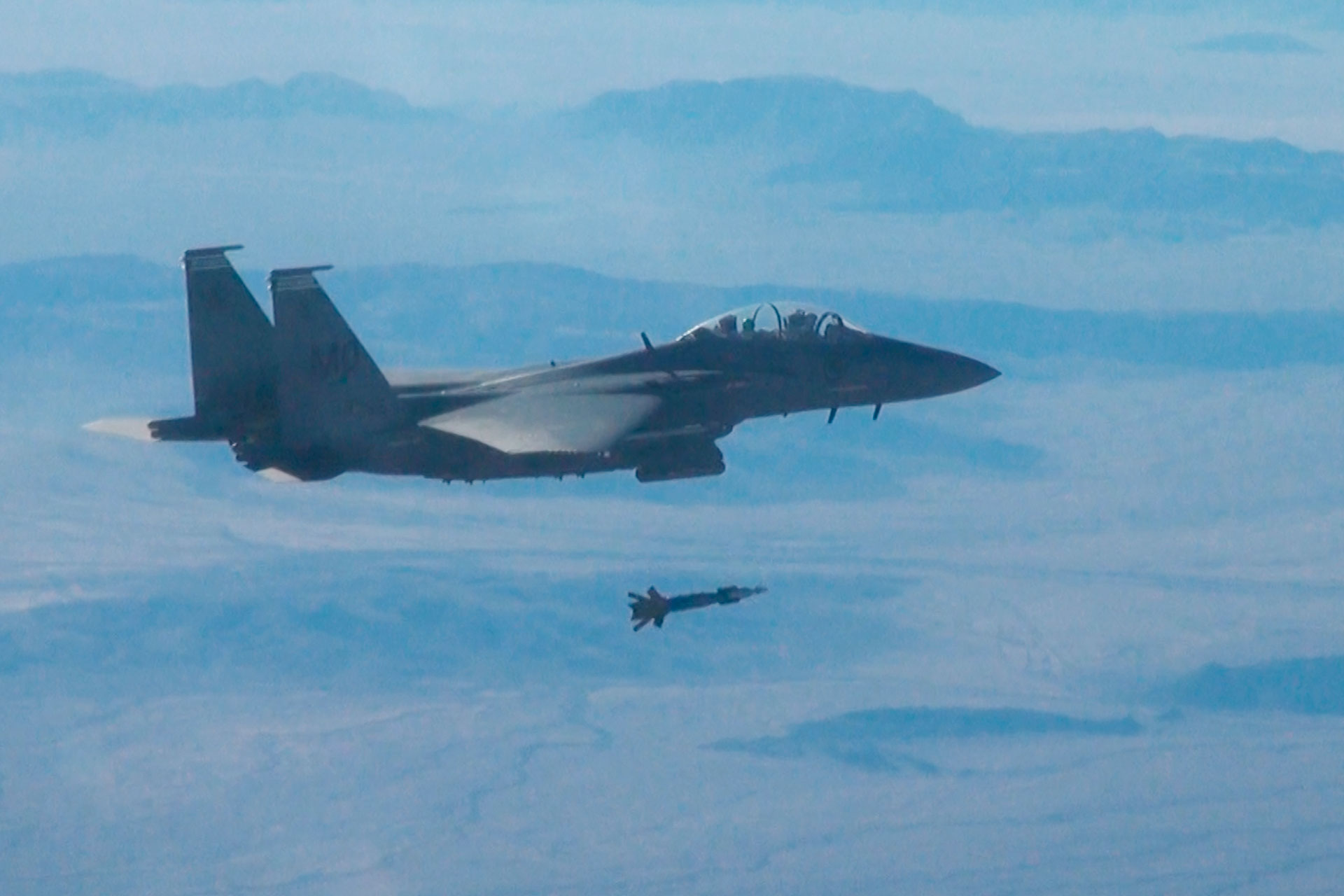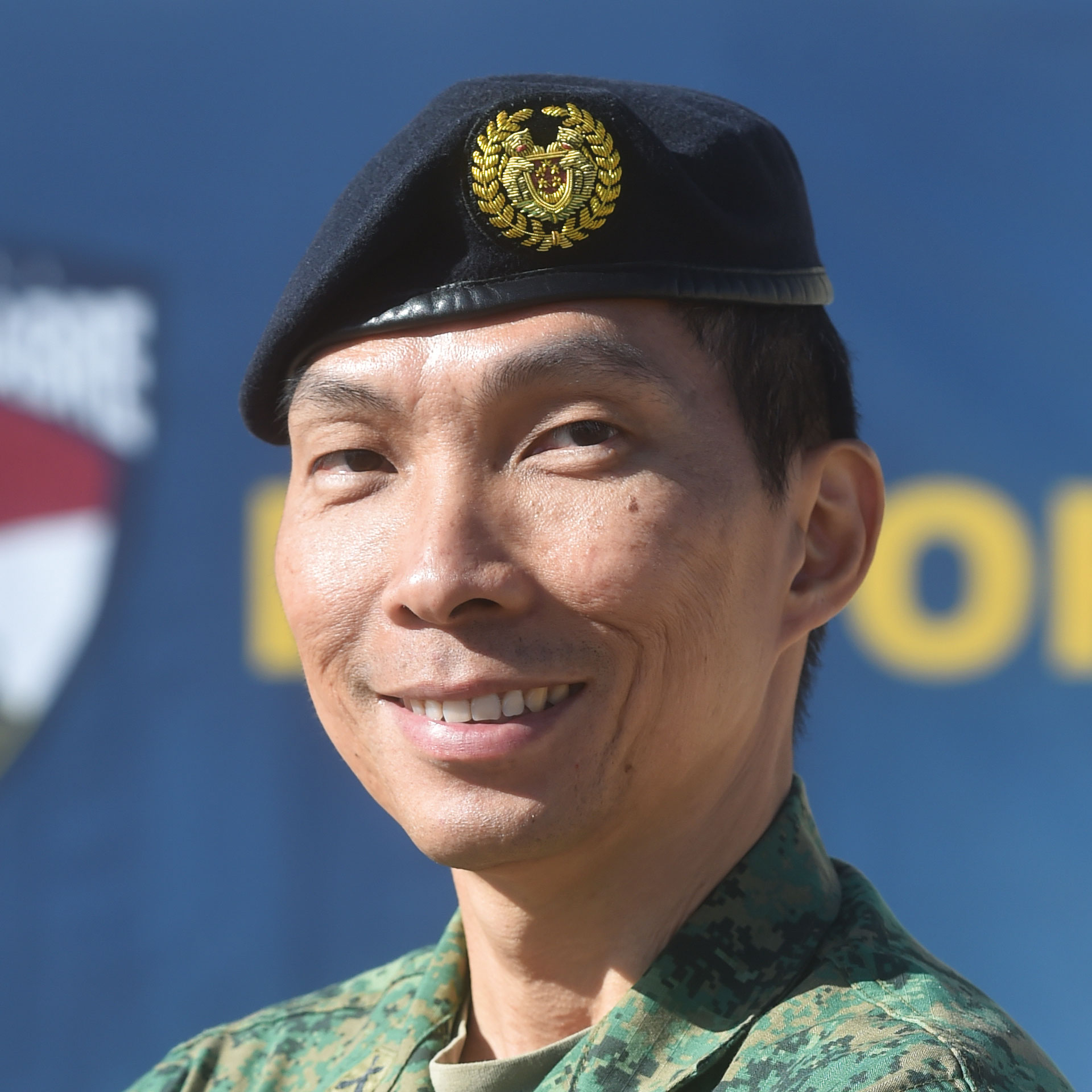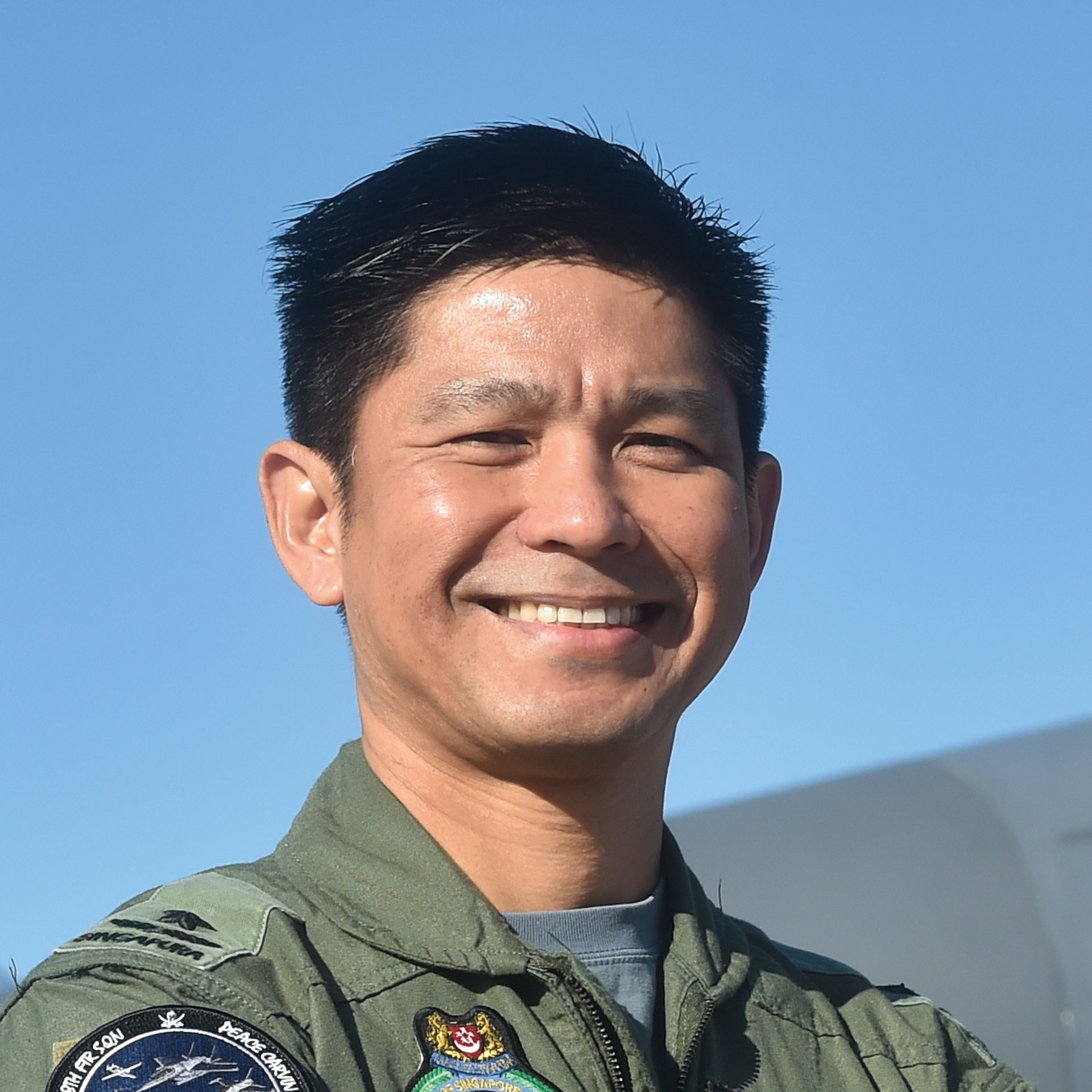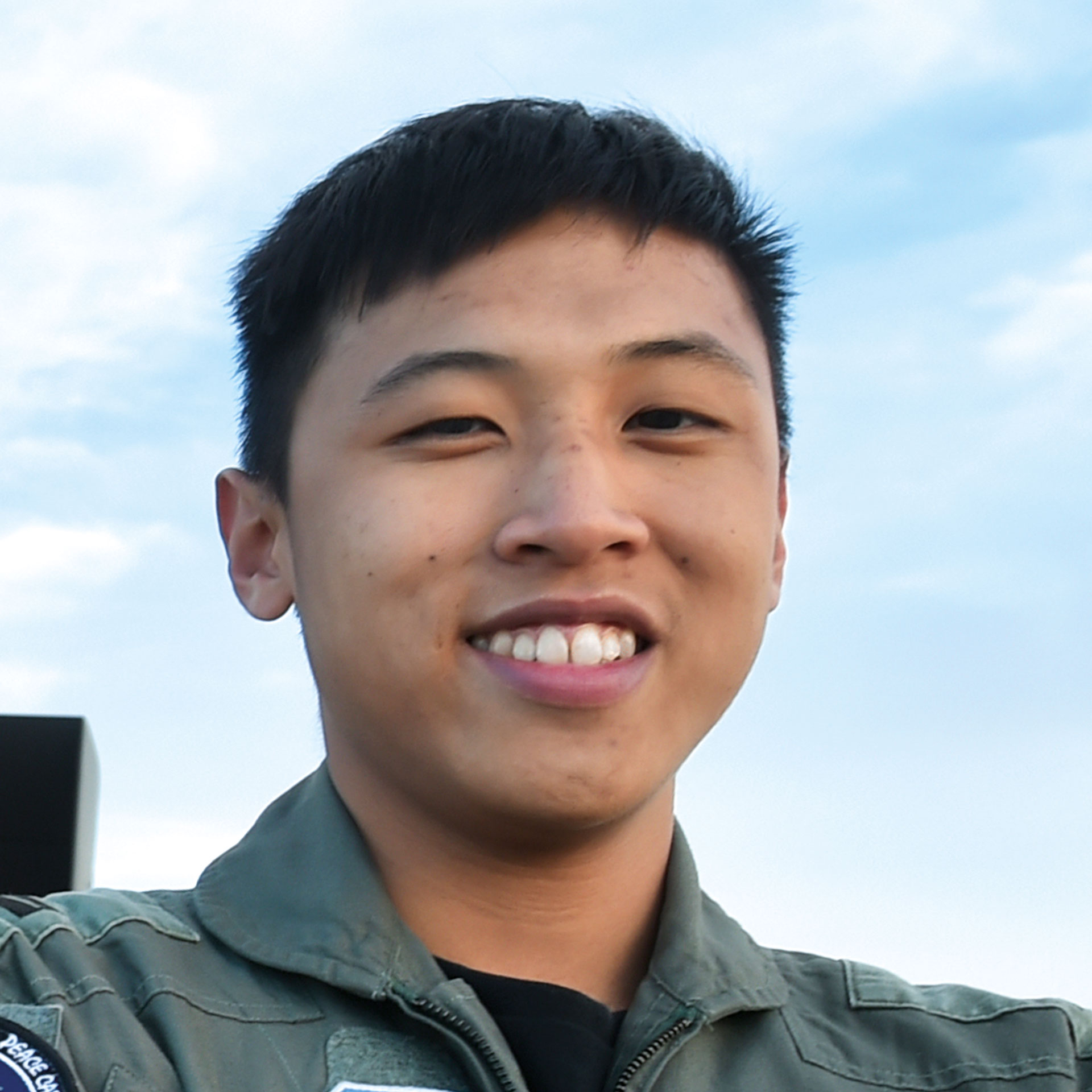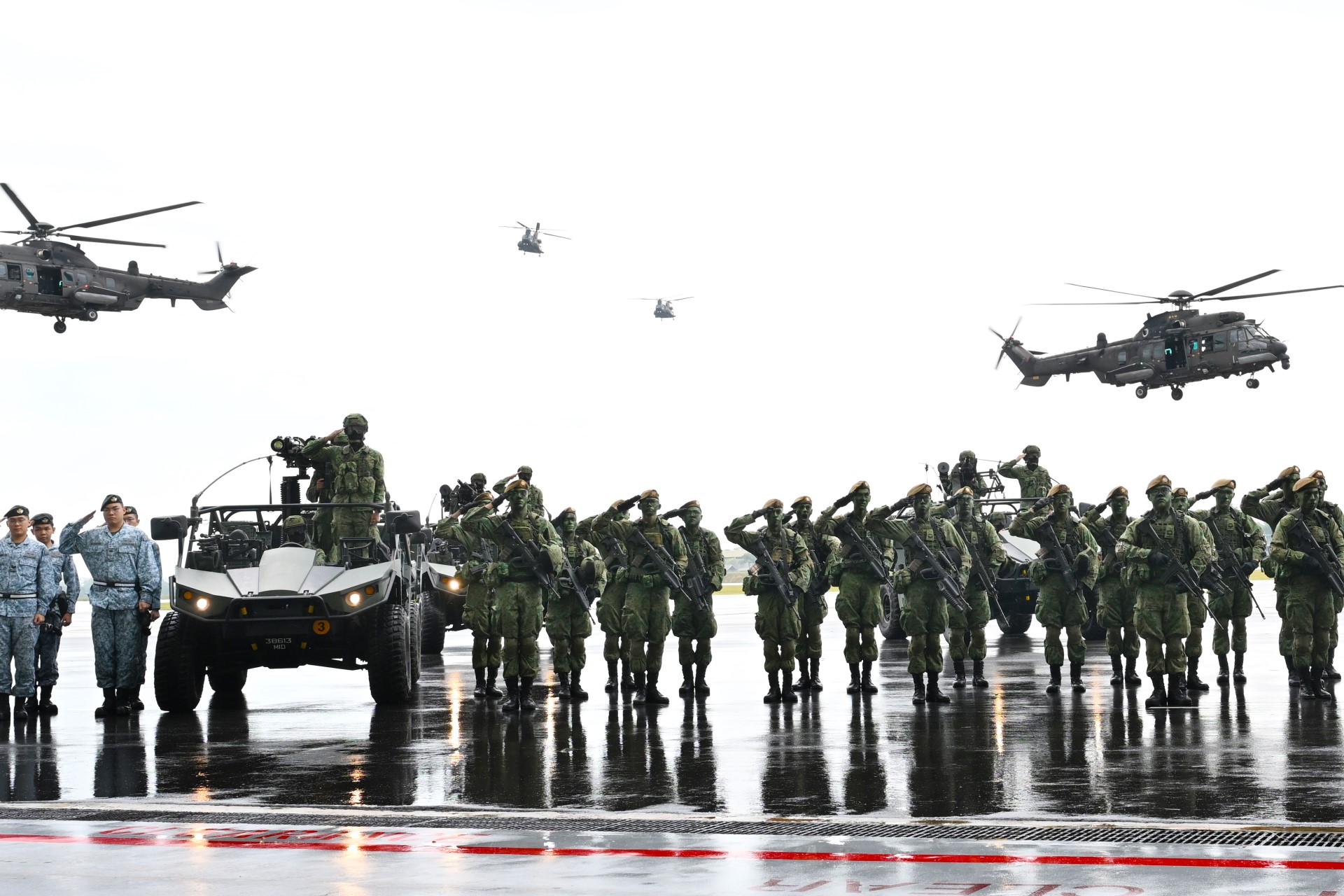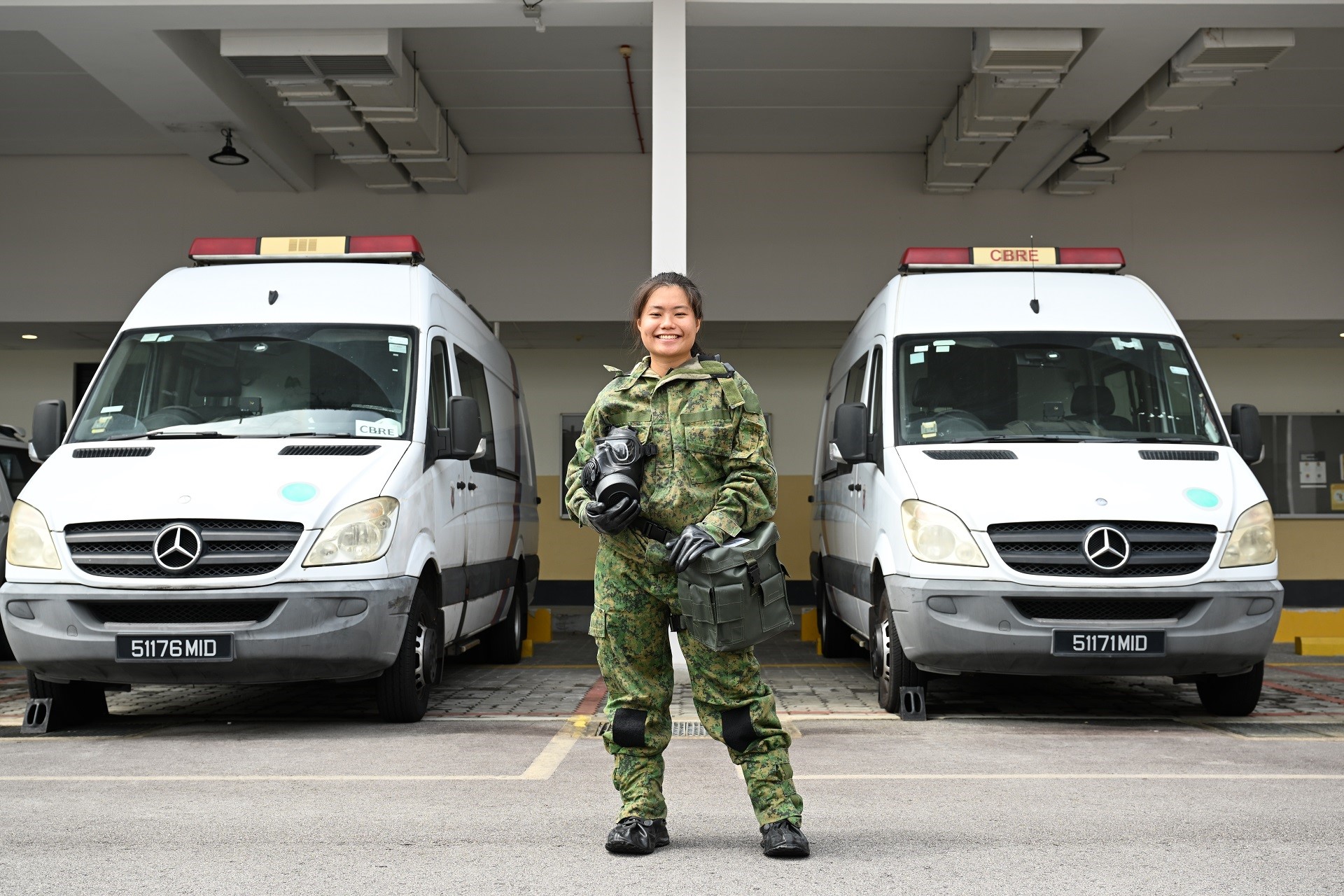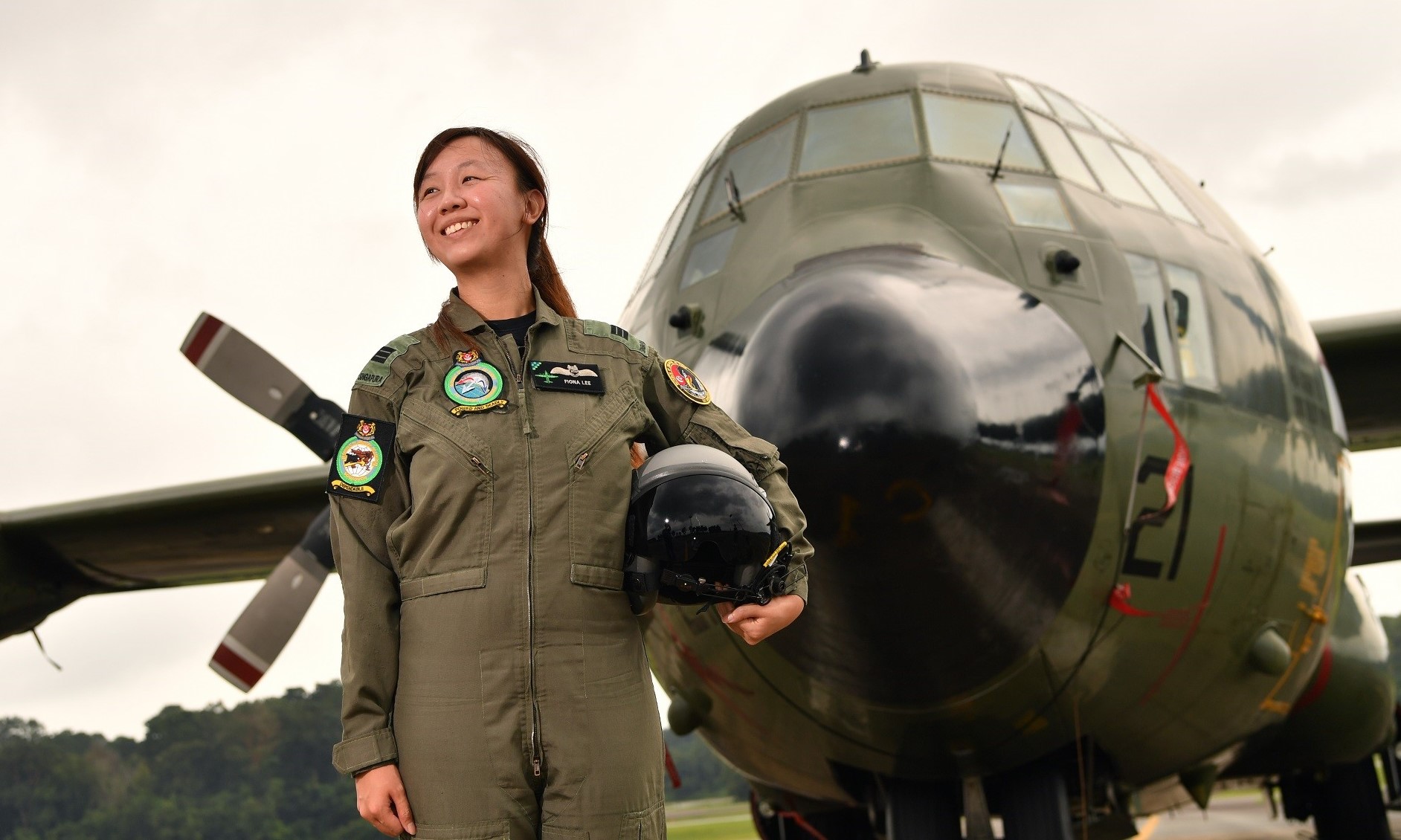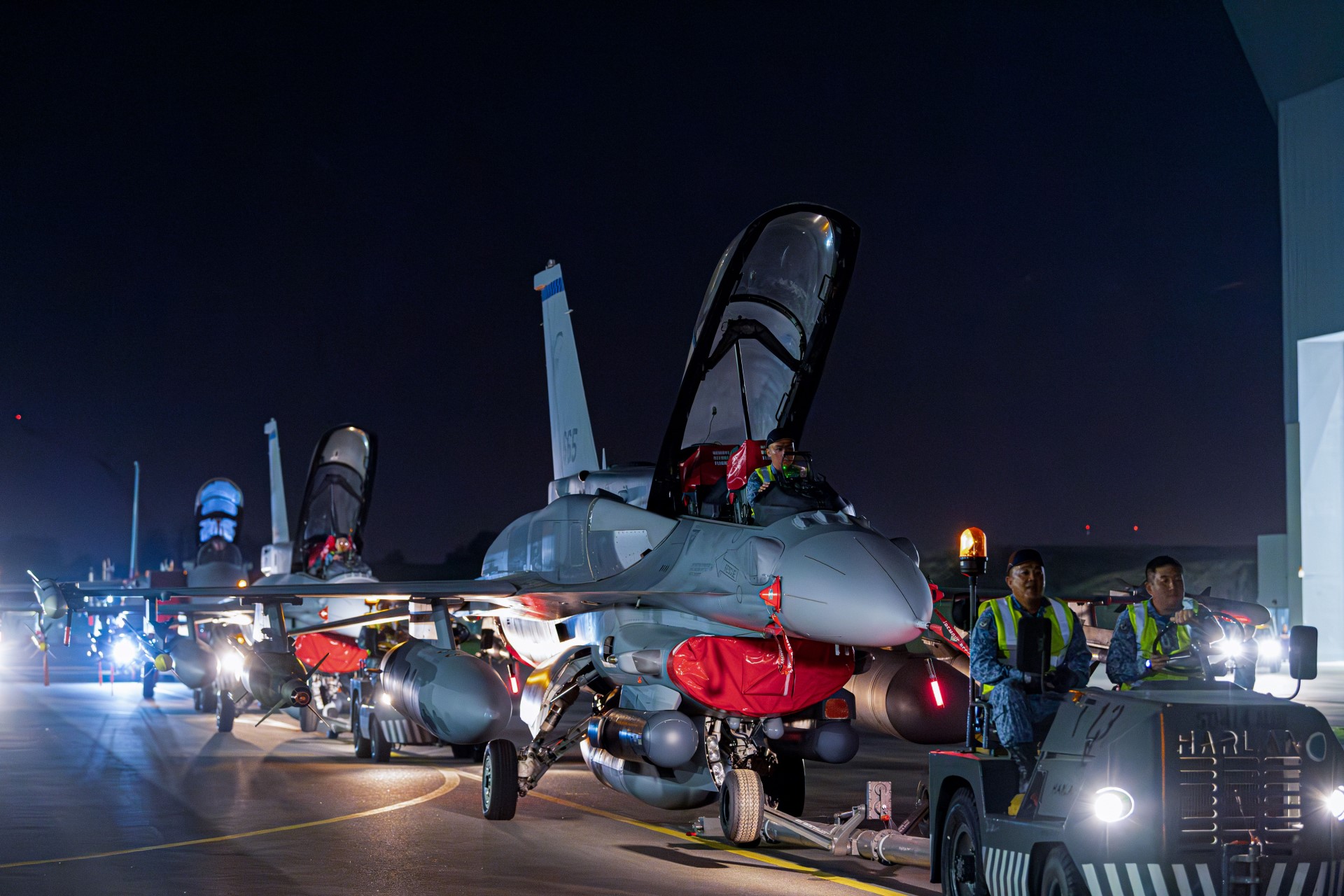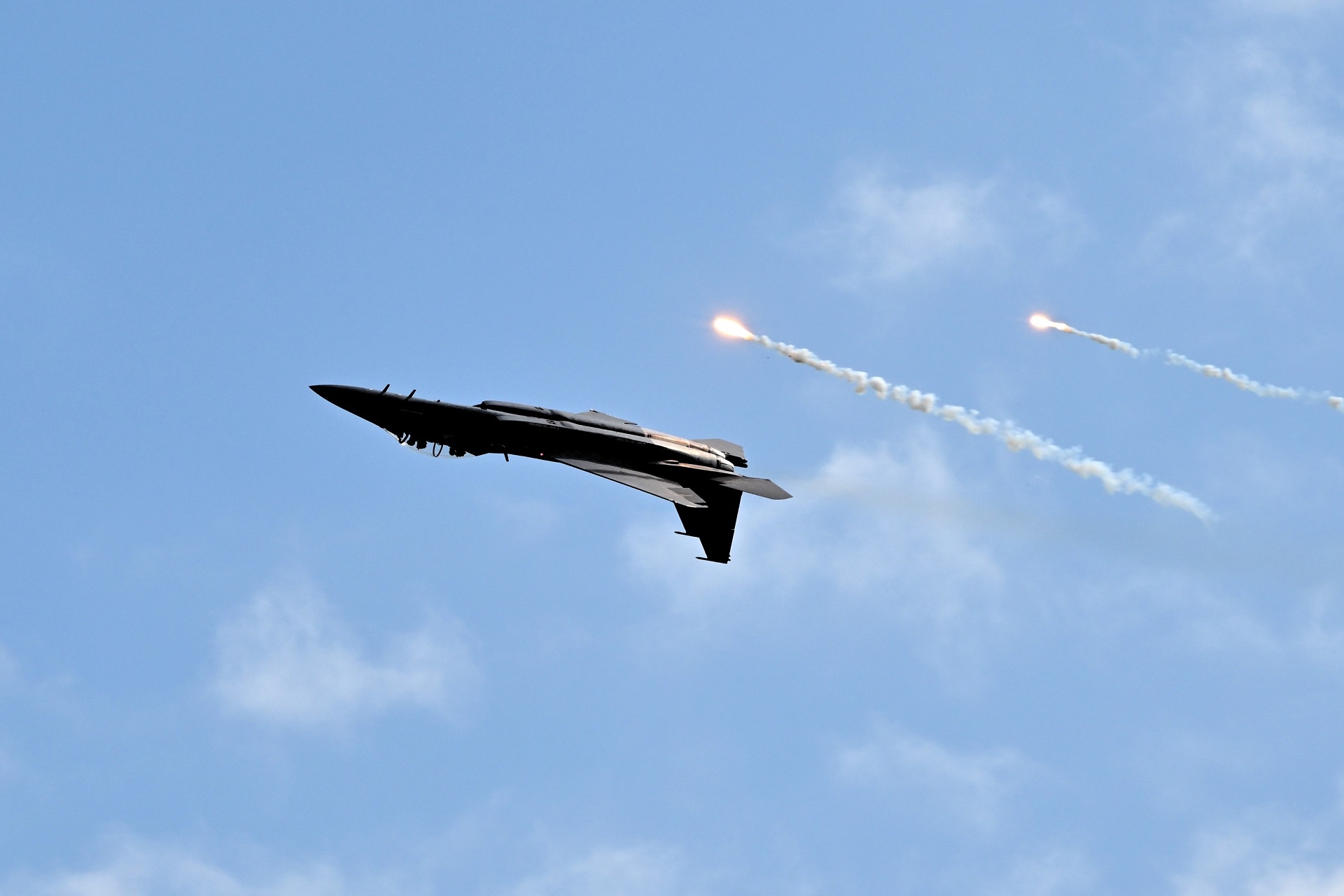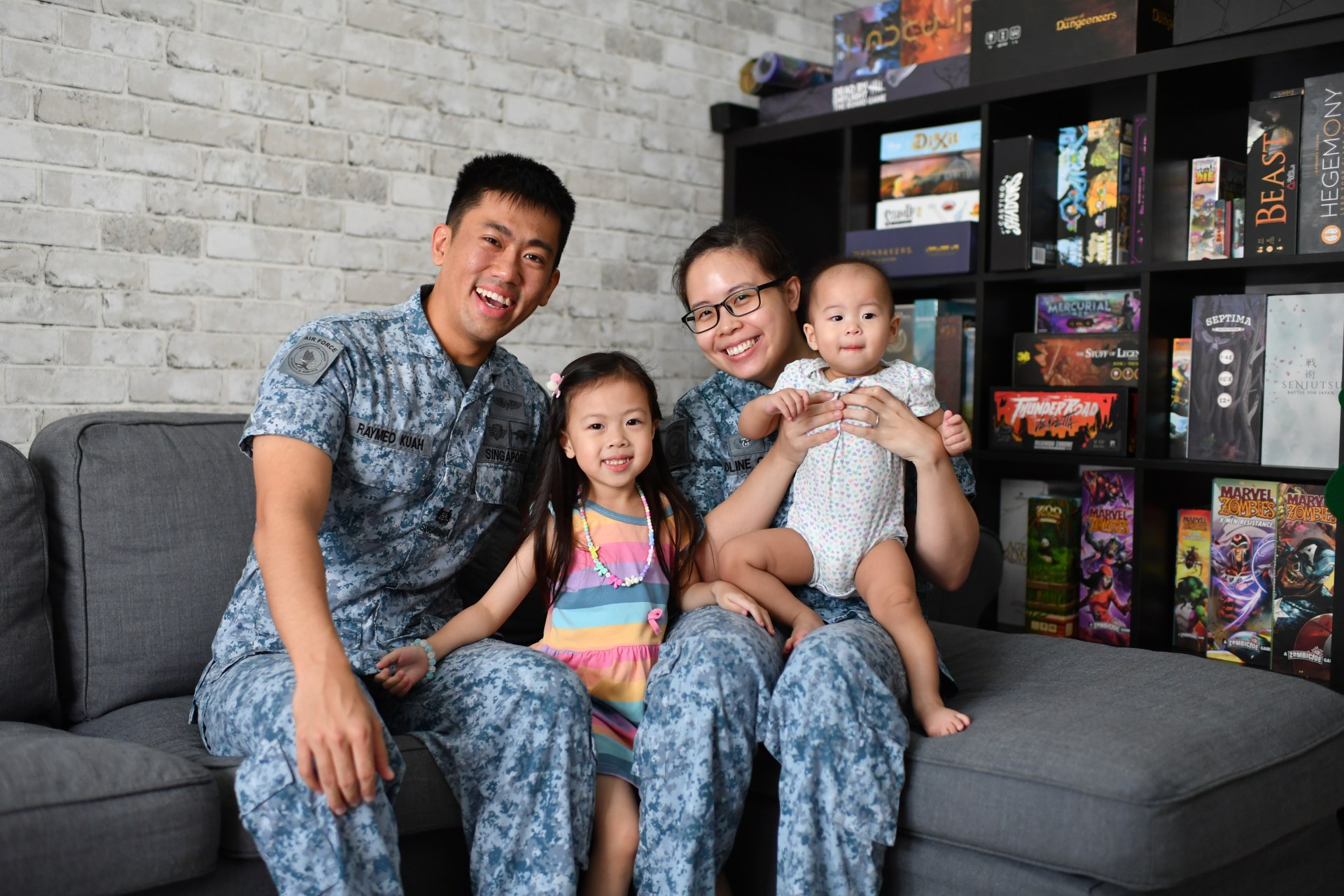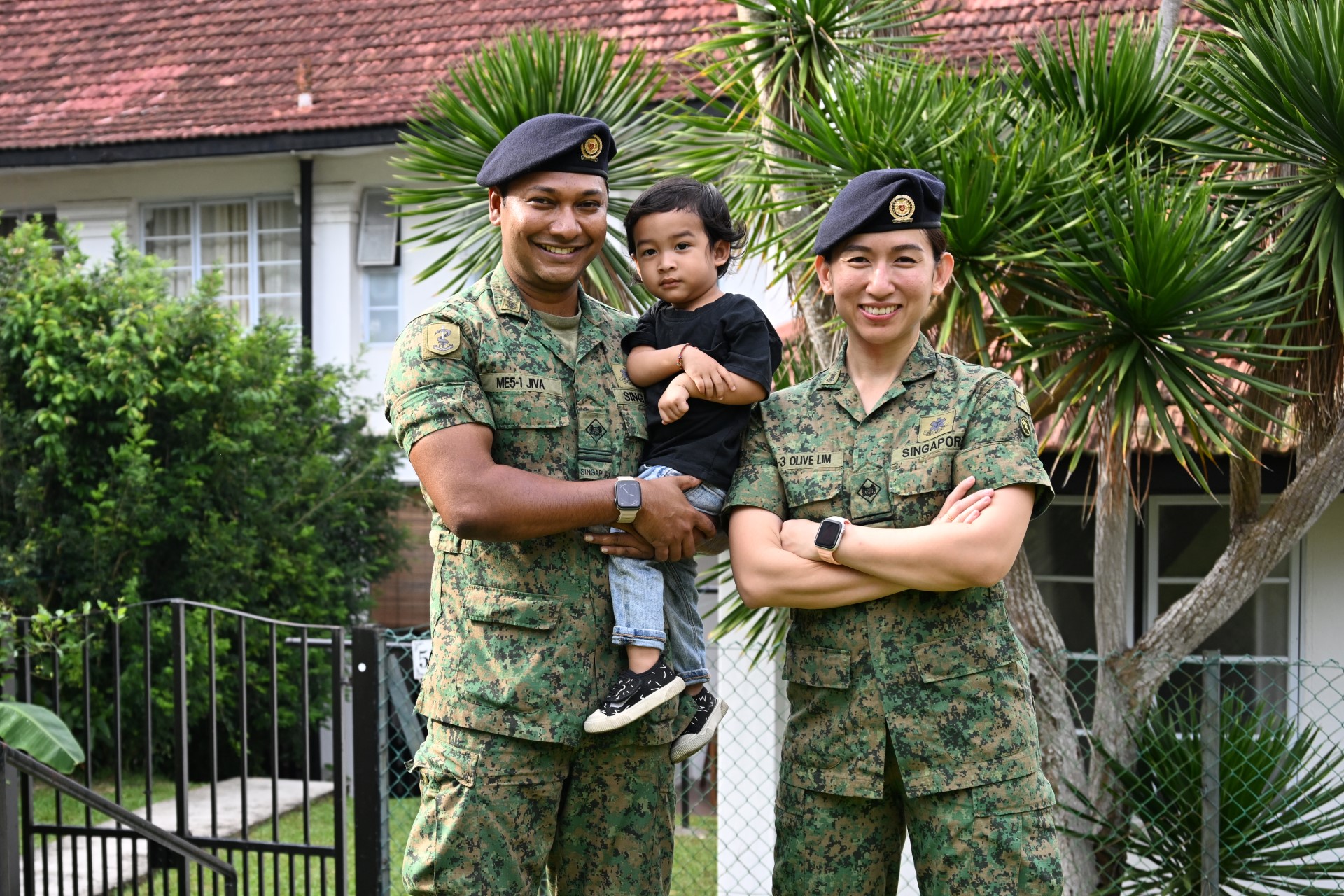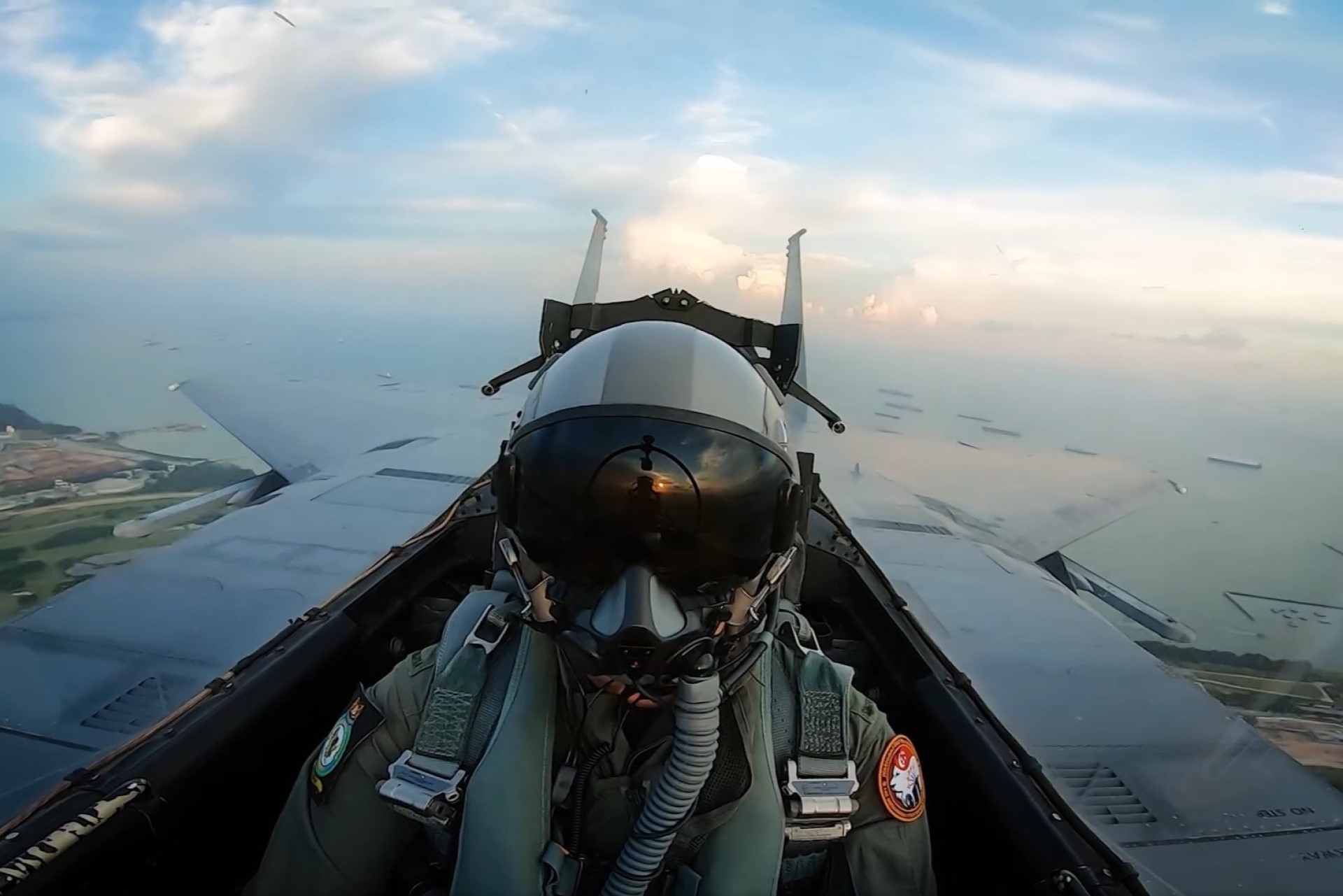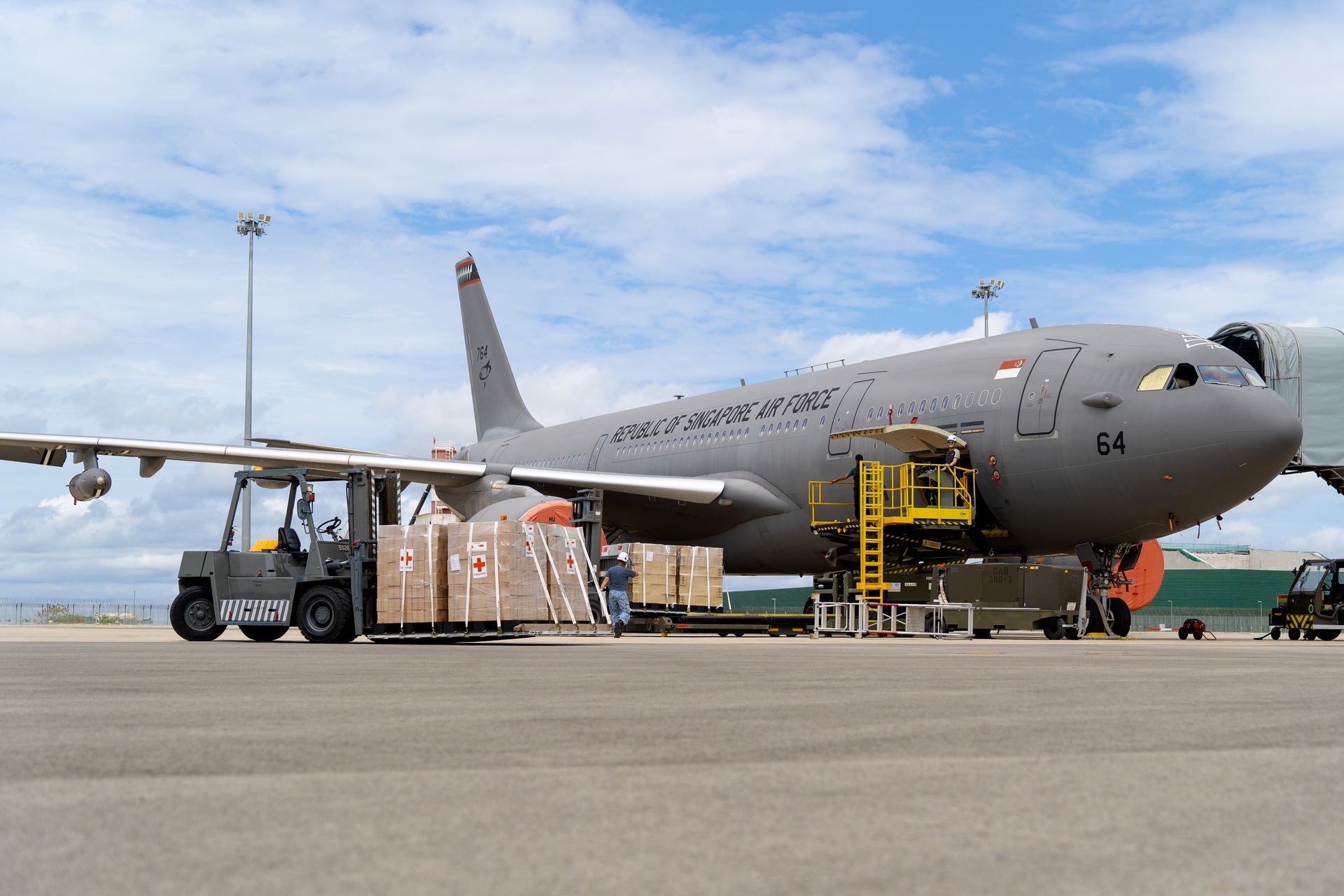Fighting as one
Exercise Forging Sabre (XFS) 2017 takes integration between the Republic of Singapore Air Force (RSAF) and the Army to greater heights.// STORY Benita Teo
// PHOTOS Chai Sian Liang, Ajay Prashad & courtesy of RSAF
In an ongoing battle, Singapore Armed Forces (SAF) troops discover that the enemy is launching an attack.
This critical information is sent by sensors which include the RSAF's Heron 1 Unmanned Aerial Vehicles (UAVs), and the Army's STrike ObserveR Mission (STORM) teams and Commando detachments.
They collect and send back information on various enemy assets and locations, sniffing the enemy out even when they are on the move or in hiding.
After the attack has been verified, an integrated response is developed at and directed from the Command Post (CP).
Strike assets like F-15SG and F-16C/D fighter jets as well as High Mobility Artillery Rocket System (HIMARS) units are launched to destroy multiple targets in various locations simultaneously.
This scenario was played out at XFS 2017 in Phoenix, Arizona, United States, as the SAF continues to integrate its forces across land, air and sea, to fight and defend as one.
From 28 Nov to 13 Dec 2017, RSAF and Army personnel and platforms trained and carried out integrated live firing across the vast terrain of the Barry M. Goldwater Range, which is about 20 times the size of Singapore.
Complex missions
The main goal of XFS 2017 was to achieve a higher level of integration between the Services in conducting more complex and dynamic missions.
With the participation of about 800 personnel as well as almost 40 air assets and artillery vehicles, this was the largest turnout at the biennial exercise, which began in 2005.
More troops and assets meant more movement in the sky and on the ground. Thus, careful coordination was necessary to synchronise and deconflict their timings and positions.
Adding to the missions' complexity, these battlefield "eyes" and "hands" had to fight in two areas of operation instead of one. They had to scan and take down enemy assets over two separate areas that spanned about one-and-a-half times the size of Singapore.
"Integration (among different assets) can be challenging... If we are able to do it between Services, it shows a high level of professionalism and competency," said Co-Exercise Director (Air) Brigadier-General (BG) Tommy Tan.
Central command
The "brain" of the exercise is the CP. Here, about 110 commanders and battle staff from both the Air Force and Army sit and work together.
Using the Command and Control (C2) system developed by the Defence Science and Technology Agency, they study the complete picture of all the data gathered and determine the most suitable weapon system to take out specific targets.
With the co-location of the C2 system and the Service commanders, both Air and Land commanders get a comprehensive picture of the real-time situation at the same time.
They are then able to swiftly identify and deploy the best assets, and develop integrated responses to the threats.
Exercise Air Director Colonel (COL) Liew Boon Ping said: "In every target area, we have a mix of firepower. I will consult the Land Director (because) he could be in a better position to conduct the air strike in certain situations, (while in others) I may be in a better position to command the firing from the HIMARS."
Exercise Land Director COL Michael Ma agreed, adding: "The command of the aircraft naturally falls under the Air Force. But they can be used by the Land Director to further the objectives of a land campaign or (key army targets) on the ground."
This also provides for added flexibility in the way battles can be fought -- different assets can now be deployed dynamically to take out targets in different areas simultaneously.
COL Liew explained: "The targets may be something a single shooter cannot manage. With our army assets deployed, (if) there is a HIMARS nearby, I can get it to take out an enemy CP while I pursue another target.
"We can do this instead of the traditional sequential method, where I have to take out the targets I see, report back, and then wait for the next mission to be sent out."
On the exercise as a whole, BG Tan said: "This exercise is about breaking silos. If we don't have these exercises to bring the commanders (and) people from different Services together…we will begin to operate on our own without understanding each other or integrating in a way to conduct effective and efficient operations."
Six for six
This year's edition of Exercise Forging Sabre (XFS) saw many firsts. We take a look at the six new introductions in the sixth iteration of the exercise.
1) Upgraded nerve centre
It is said to be the central nervous system of the Command Post (CP). Developed by the Defence Science and Technology Agency (DSTA), the Command and Control (C2) system has evolved over the years.
From requiring users to correlate the Unmanned Aerial Vehicle's (UAV's) video surveillance footage and a static map of the target area on two separate screens, the system can now overlay the video footage on the map, while providing geographical information like road names and landmarks as an additional overlay.
At XFS 2017, the C2 system has been further enhanced with new capabilities. One of these is performing more accurate and rapid battle damage assessment using new video analytics technology.
By studying past data on bomb drops and explosion patterns, the system can accurately identify the impact point of a bomb and also determine if the target has been destroyed. The result is then communicated to commanders at the CP.
This is a step up from when analysts would have to go through entire videos to find the exact frame that captured the impact. Users can also "bookmark" notable points of the video to be searched and retrieved or shared for post-analysis.
Newly introduced sense-making tools help commanders in making better mission-critical decisions. This includes a dashboard to aggregate high-level information like the number of available or functional assets and bases.
Also used for the first time at XFS 2017 was a simulation module that can be used for land campaigns.
The simulator is also able to increase mission complexity by inputting additional features into the battlefield picture, such as hiding spots for moving targets.
On the benefits of using an indigenously-developed C2 system, DSTA's Development Programme Manager (C4I Development) Loke Ee Foong, 43, said: "If we use out-of-the-box commercial products for capabilities like the overlay of weapon effects, it may not be as tightly integrated with our C2 system. So things like information and decision-making tools may not be as seamlessly integrated."
2) Birds and beasts
The Heron 1, the Republic of Singapore Air Force's (RSAF's) newest UAV, made its debut at XFS 2015. This year, it trained for the first time together with the Army's High Mobility Artillery Rocket System (HIMARS).
For Heron 1 operators such as Command Pilot Captain (CPT) Ronald Lim, participating in a live firing with heavy-duty shooters like the fighter jets and HIMARS offered valuable insights to war-time operations and requirements.
The 27-year-old said: "Being able to see the HIMARS striking targets on the ground gives us a better understanding of how artillery operations work (and) how we can better support them by giving the appropriate video picture in battle damage assessment. We also do sense-making so that the commanders know what they need to look at in order to make assessments of the ground and actions to take."
3) Commanding on the go
At XFS 2017, the Singapore Artillery also took the opportunity to test out the new HIMARS Battery Command Post (BCP) for the first time as part of a live-firing exercise.
Unlike the old BCP, that was deployed out of 1.5-tonners and could only operate when it came to a stop, the new BCP boasted three new features.
First, enhanced data connectivity with other strike elements provides live updates and improves the HIMARS operators' and commanders' situational awareness, allowing for Command-on-the-Move.
The new BCP can also conduct certain tactical operations without having to deploy fully, unlike in the past when the vehicle had to stop completely before conducting fire missions.
Monitors in the BCP instantaneously and accurately show the location of all the artillery battery's elements, allowing for more effective deployment and operations as it removes the need to report positions through radio communications.
Second, it is also more easily and rapidly deployable, requiring only four minutes to set up, compared to seven for the old BCP.
Third, with two on-board generators, it can support operations for up to 48 hours continuously. The old BCP had generators that needed to be manually deployed at least 30m away from the vehicle. These generators ran on fuel that had to be topped up repeatedly.
The new BCP also received an upgrade to the Universal Fire Control System. With this, each HIMARS can now acquire and simultaneously engage up to six targets as far as 70km away.
Full-time national serviceman and HIMARS operator Corporal (CPL) Arijit Dasgupta was impressed to see how much the BCP has improved.
"We can put all the comms into just one vehicle, and it's a lot more high-tech and automated," said the 20-year-old, who was a driver for the new BCP during the exercise.
"While going from one deployment area to another, there can be a change of instructions. It could be difficult to communicate this when we didn't have such an automated system. Now, if the higher-ups tell us we are going to fire at a different location, we can quickly change our course."
4) Look both ways
XFS 2017 upped the battlefield ante by introducing multiple Areas of Operation (AOs). Sensors and shooters had to keep a keen eye for moving enemy targets across two separate AOs, one about 780 sq km (the size of Singapore) and the other about 400 sq km.
Fighting over two AOs was a new experience for F-15SG pilot Lieutenant (LTA) David Ong. However, the 24-year-old was confident that his training had prepared him for the missions: "We're well-grounded in the fundamentals. With a single target, the focus is (trained) on that target, but we are also taught to deal with the complexity of multiple targets."
To ensure that no stone is left unturned, more UAVs are deployed to cover the large area.
CPT Lim explained: "Rather than seeing only one picture, the commanders can see two on the ground through simultaneous feeds and what's going on in two different areas in the battlefield. This gives them the ability to make decisions faster."
5) Zeroing in
Enhanced lasing capabilities and preservation of troops -- these were the benefits of the STrike ObserveR Mission (STORM) teams' new Target Acquisition Designator System (TADS).
It comprises a Day Night Ranging System (DNRS) mounted on top of a Portable Laser Designator Rangefinder (PLDR) 3.
The DNRS uses a Class 1 laser finder to locate targets up to 5km away. The GPS (global positioning system) coordinates are then computed in the system to be sent out to shooters like the HIMARS and fighter jets, or directly to the CP.
The PLDR 3 can carry out lasing at up to 10km, guiding HIMARS and fighters to their targets while staying a safe distance away. Using a Class 4 laser, it carries out designation for the heavy GBU bombs carried by the fighters.
For night lasing, the PLDR 3 is paired with the DNRS. The DNRS captures images in high definition, boasting sharper images of the targets under limited lighting.
The DNRS weighs about 3kg while the PLDR weighs about 7kg. This makes the TADS almost half the weight of the older Laser Target Marker (LTM 91) that STORM teams used. The reduction in bulk and weight increases the troops' sustainability and mobility.
"This (the TADS) adds on to our capabilities to do night missions," said 1st Sergeant (1SG) Vasudevan s/o Nagarajan. The 22-year-old Artillery Specialist was the STORM 2nd In-Charge at the exercise.
"The DNRS has thermal imaging so it enhances our night ranging capabilities. It's also high definition, so we can take and save images or videos. We couldn't do that with the old version."
6) Mother of all bombs
Another ground-shaking first in this exercise series was the dropping of the live GBU-31, a 2,000-pound Joint Direct Attack Munition.
One of the heaviest bombs in the RSAF's arsenal, it was carried and dropped by the F-15SG fighters.
The new bomb would allow the RSAF to overcome more kinds of threats, said LTA Ong.
"The 500-pound and 2,000-pound bombs are suited for different kinds of targets. The GBU-31 is useful for attacking fixed targets that need penetration, such as reinforced structures.
